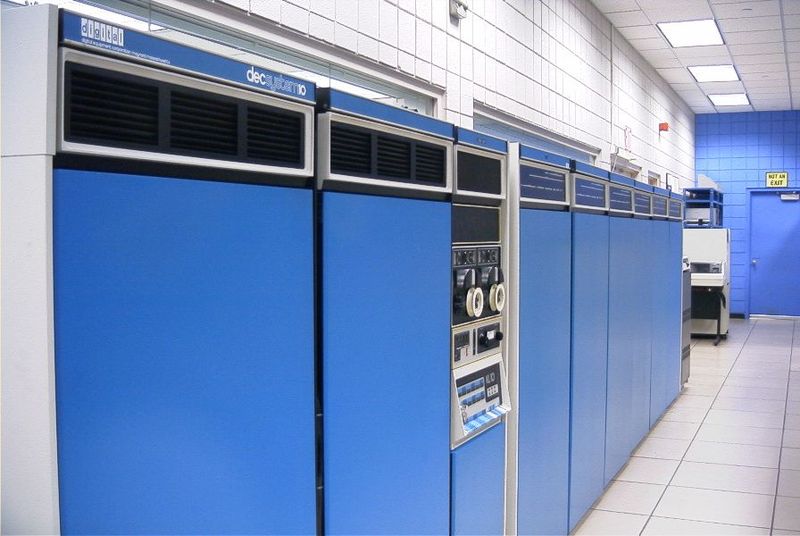History of Operating
Systems
 The LEO III was the first computer that would allow multiple
programs to be run. When the first program had completed an instruction and was
now loading data the next program would use the CPU. The pheripherals added to
the computers were considerably slower than the CPU, this allowed for many
programms to seemingly run at the same time. But this was not true
multitasking, it would still have one program having full use of the CPU
The LEO III was the first computer that would allow multiple
programs to be run. When the first program had completed an instruction and was
now loading data the next program would use the CPU. The pheripherals added to
the computers were considerably slower than the CPU, this allowed for many
programms to seemingly run at the same time. But this was not true
multitasking, it would still have one program having full use of the CPU
Computer
manufacturers developed there own O/S for individual machines. Digital
Electronics corporation (DEC) used a central computer(DPD10) with workstations
where the operator used the CPU in true multitasking, other operators were also
using the main central computer at the same time. The operating system was the ITS (Icompatable
Timesharing System) developed by MIT

ITS introduced many revolutionary
features:
·
It had the first device-independent graphics terminal output; programs
generated generic commands to control screen content, which the system
automatically translated into the appropriate character sequences for the
particular type of terminal operated by the user.
·
A general mechanism for implementing virtual devices in software which
ran in user processes (which were called "jobs" in ITS).
·
Using this mechanism, it provided transparent inter-machine
filesystem access (almost certainly the first operating
system to do so). The ITS machines were all connected to the ARPAnet, and a user
on one could perform the same operations on files on other ITS machines as on
local files.
·
Sophisticated process management; user processes were organized in a
tree, and a superior process could control a large number of inferior
processes. Any inferior process could be frozen at any point in its operation,
and its state (including contents of the registers) examined; the process could
then be restarted transparently.
·
An advanced software interrupt facility that allowed user processes to
operate asynchronously, using complex interrupt handling mechanisms.
·
PCLSRing, a mechanism
which provided what appeared (to user processes) to be quasi-atomic, safely
interruptible system calls. No process could ever observe any process
(including itself) in the middle of executing any system call.
·
In support of the AI Lab's robotics work, ITS also supported
simultaneous real-time and time-sharing operation.
Many of these, and numerous other
significant advances, were later picked up by other operating systems.
Peter
Blog post #2
No comments:
Post a Comment